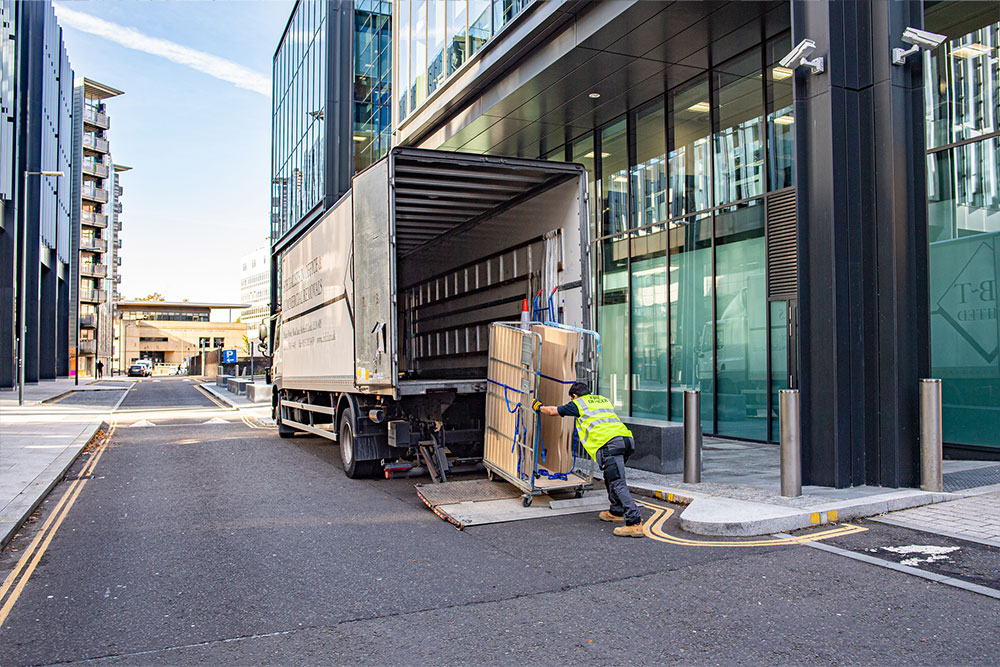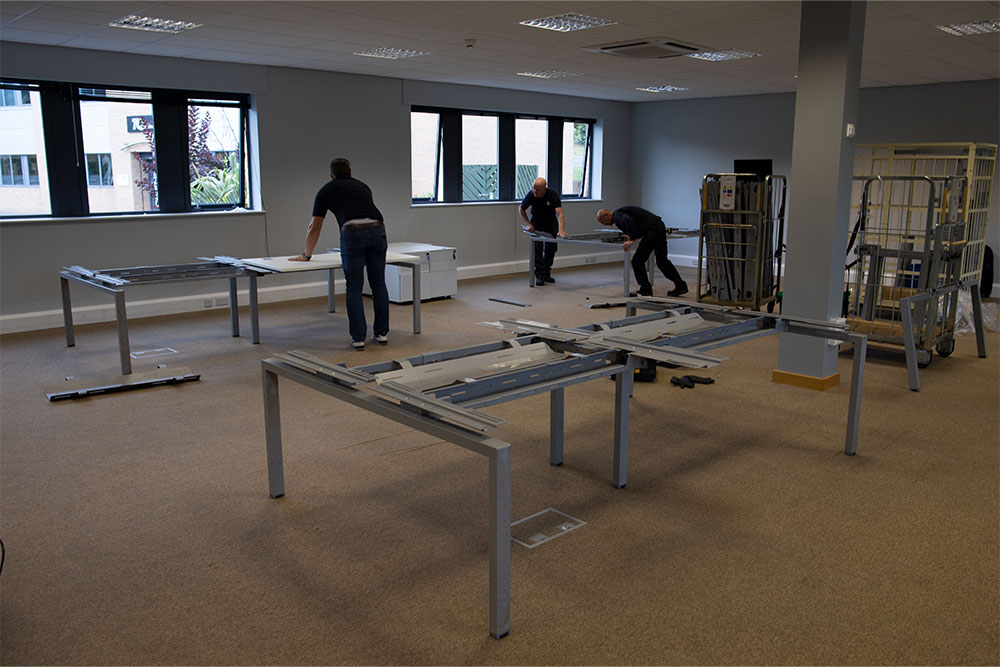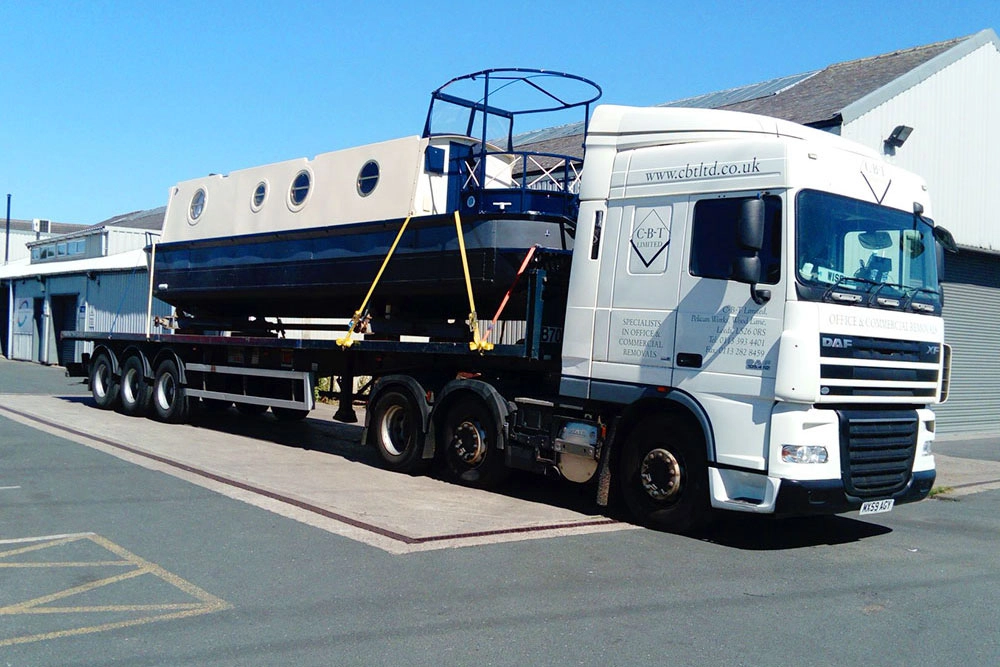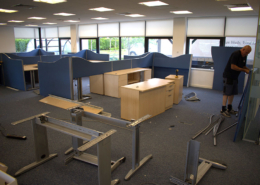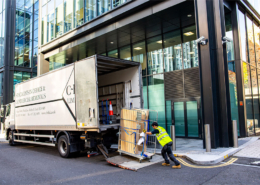Though the events of the past 18 months have promoted a remote or hybrid working environment, you may still find that you are in the market to relocate your physical office. Office relocations in the modern age tend to be much more complex than they were in the past. You’re not just moving your furniture — you’re moving an entire IT infrastructure and network configuration. Plus, you’re trying to do so with as little downtime as possible. With such a daunting task, it can be easy to overlook things, creating the potential for headaches — and unanticipated downtime — when you eventually make the move.
You want an ideal office location that is accessible to your customers and staff and meets your needs as a company. Once you find the best site, you need to move your office equipment. While this seems daunting, having a planning process for moving into your new office space ensures that you can conduct business on Day One.
Regardless of why you are moving offices, it’s essential to have a business continuity plan. A plan ensures that you can work seamlessly during and after the move, so you have continuous revenue and a solid customer base. In particular, the IT infrastructure needs of your business are one of the essential functions to keep your business operations running smoothly.
Business owners looking for a new office setup have a lot on their minds as they coordinate a move. By following best practices for moving office IT infrastructure, you can ease the stress with a systematic approach to moving your IT system and still meet your business’s needs.
An Office Move Checklist for IT Infrastructure
Carefully planning your office move, especially when it comes to IT, will make it much less stressful. Details like figuring out how many power outlets are in your new office space and how many you need for your cabling requirements will help you build an accurate checklist.
Creating a checklist will help you remember what you need to do to launch a successful office relocation plan. Plan your move, evaluate your current office equipment, and decide what needs upgrading. Also, prepare communication systems and make sure data is secure during the transfer.
Keeping track of all that information requires attention that you instead should be using to conduct your business, so being organized is key. You can enlist the help of a partner like Consolidated Technologies to help, but you may want to get a head start. If so, ask yourself the following questions to help you plan how you’ll relocate your IT infrastructure:
Step 1: How Do I Plan My Move?
Before starting your move, first evaluate your situation. Here are a few things to be doing as you start planning:
- Establish a schedule for the moving process, and take stock of any projects that may be affected by the move.
- Identify how business-critical operations will be performed during the move, and when they will be interrupted.
- Analyse your existing location and its facilities, utilities and other relevant IT factors so you know what you need in the new space.
- Get in contact with any internet service providers, carriers, and technology vendors, so they know when you’re moving and can manage your equipment accordingly.
- If a new building is involved, contact your architect or contractor to discuss the details of the project and develop a configuration plan.
- Estimate the costs of the move, including a contingency fund, to get a comprehensive budget.
Before you move, consider what type of telecommunications options will work best for your company, such as what kind of network infrastructure you need to conduct business. Think about the communication needs of your business and how much line capacity you will need. It’s also important to evaluate your current company data systems to see what you can continue using or improving upon to meet your business needs.
When you’re ready to make a site visit, you may want to assemble another checklist of things to take note of during the trip. Items on this list may include:
- Identifying locations for workstations, printers, scanners, routers, network cabling points, power jacks, data cables, etc.
- Analysing the server room for your requirements regarding cooling, ventilation, electrical requirements, and security.
- Making a detailed blueprint of the office with your identified workstations, IT infrastructure, fixtures, and more.
Step 2: How Should I Assess My Equipment?
Assess your physical hardware and connections next, so you have a comprehensive inventory. This is also a good time to consider an upgrade. If your equipment is older or is slowing down, starting with a fresh installation of newly purchased equipment installed at the new office is a great way to make your move smoother, while improving your infrastructure at the same time. Some tips for conducting this assessment:
- Put together an inventory of all of your current IT assets.
- Compare your current IT infrastructure to the infrastructure at the new location.
- Determine your current communication requirements and whether your new office space will meet them. If not, you will need updates for your equipment.
- Identify placement requirements for your equipment, peripherals, and connections.
- Evaluate your existing network cabling requirements and determine whether you need to expand or update it to meet the requirements of your new location and industry standards.
- Look at your cabling company and decide if you can continue business with them or if you need to move on to another.
- Review all upcoming IT upgrades and acquisitions, and decide whether you can accomplish them at the same time as the move to save time and simplify procedures.
- Create a plan for selling or disposing of any obsolete equipment.
- Decide how you will handle any network downtime. Strategies may include purchasing redundant software or hardware to support your operations during the move.
Step 3: How Do I Prepare My Telecommunications Systems?
Ensure continuous communications with VoIP telephony system and SIP trunking technology. These phone systems usually come with continuity and disaster recovery capabilities built in, so you can reroute phones if your communications go out during the move. Some other considerations:
- Assess what you need to do to handle voice data in your network during the move and setup process.
- Take an inventory of your communications devices across your personnel and business divisions. This includes your entire business phone system, handsets, computer system softphones, smartphones, and other mobile devices to determine users’ individual needs, as well as what kind of network strength your business needs to support it all.
- Evaluate your internet connectivity needs to determine what type and strengths of internet access you need for effective business operations.
- Determine how many phone lines you need, and arrange the transfer of all phone numbers you want to keep.
- Notify your telecom solutions provider of your move, and discuss with them how calls will be handled during the moving process. Set up call forwarding and rerouting procedures as necessary.
- Gather contact lists — including email addresses and phone numbers — and back up any data from your telecommunications systems before your office relocation.
Now would also be a good time to review your telecommunications service providers and evaluate how happy you are with their performance. If you find you are not satisfied, an office move is a great time to consider another provider. If you’re not already using private cloud services, now might be a great time to switch — a decision that could further simplify your move. Private cloud services can help you protect your data, while adding wider network access and voice features.
Step 4: How Do I Address Network and Data Security?
Administrative details are often overlooked in a move, but this is an excellent chance to improve your network security and control measures. Be sure to put steps in place that enhance security and protect your data during the move itself. Here are some steps to achieve this goal:
- Take inventory of all existing and expected protected assets and resources.
- Develop a plan for transit protection for business data. Use movers who are experienced in electronics transit, and involve IT and your telecom provider in the process.
- Create a detailed list of employees, business groups, and administrators and their current network access rights.
- Detail your company’s existing security policy, and update it if needed, to include all access and verification procedures.
- Determine all the tools needed to enact or maintain your procedures and protect your hardware and data.
- Assess contracts with security vendors and renew, negotiate, or cancel plans as needed.
- Enlist the help of a managed IT provider to support your data security as you move offices.
Additional Items to Consider
Beyond these items, you should also consider the following to support your move from start to finish.
- Develop multiple contingency plans to cover any delays, equipment breakages, and security breaches.
- Make physical copies of all your data, and store backups in a safe location for the duration of the move. Make sure you are capable of performing disaster recovery, should something happen in transit.
- Back up your systems to a public or private cloud and notify your provider of the relocation to discuss security protocols, potential changes, and any special conditions that may apply to the new environment.
- Label your equipment clearly and keep cables located with the correct hardware.
- Enlist the help of a company that has prior experience in overseeing IT infrastructure relocations.
- Test all of your equipment and systems after the move to ensure everything is working and your business procedures can continue without issue. Test network connection and test phone numbers you will use at your new location. Also test call forwarding, server functioning, incoming and outgoing emails, network connections, and more.

